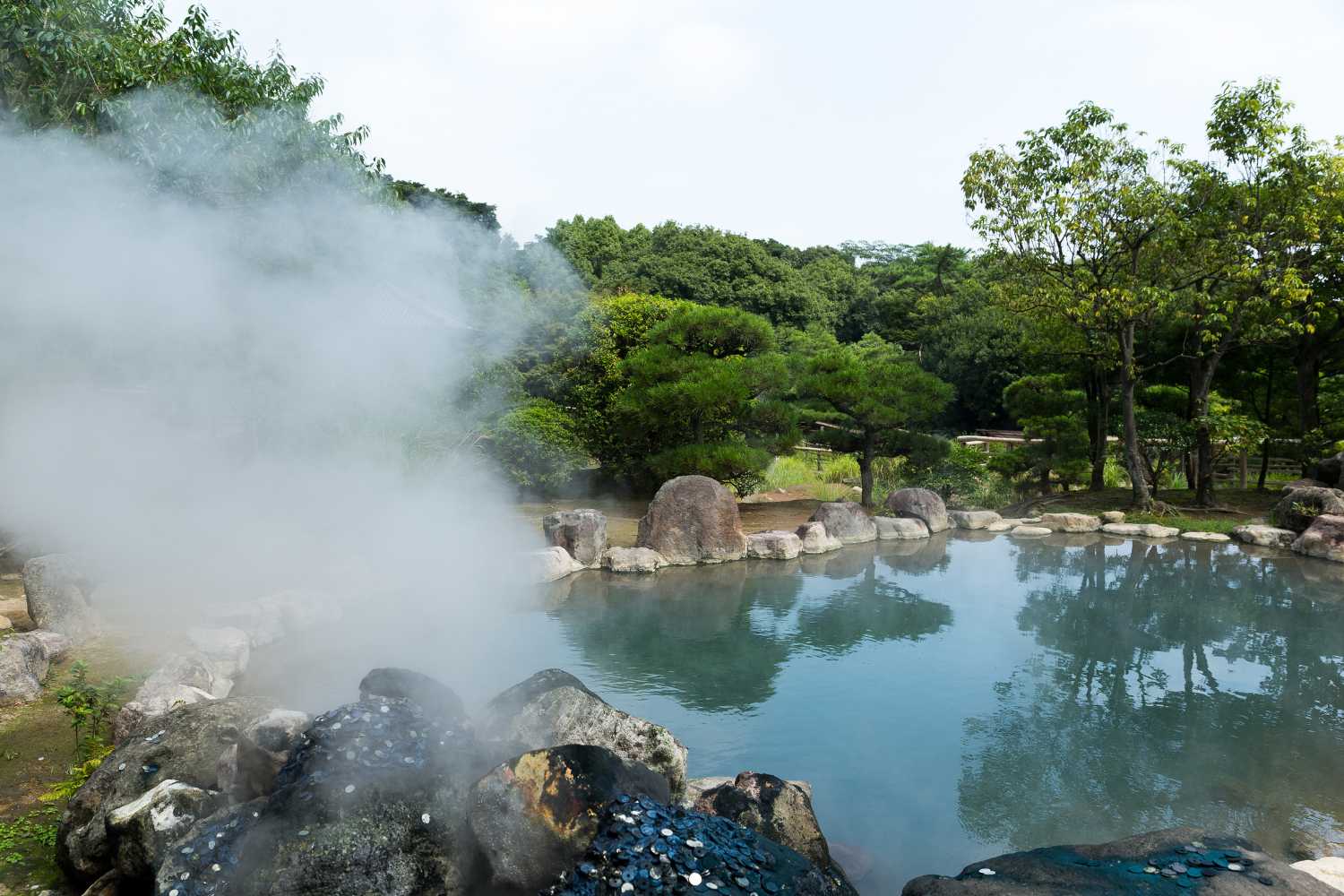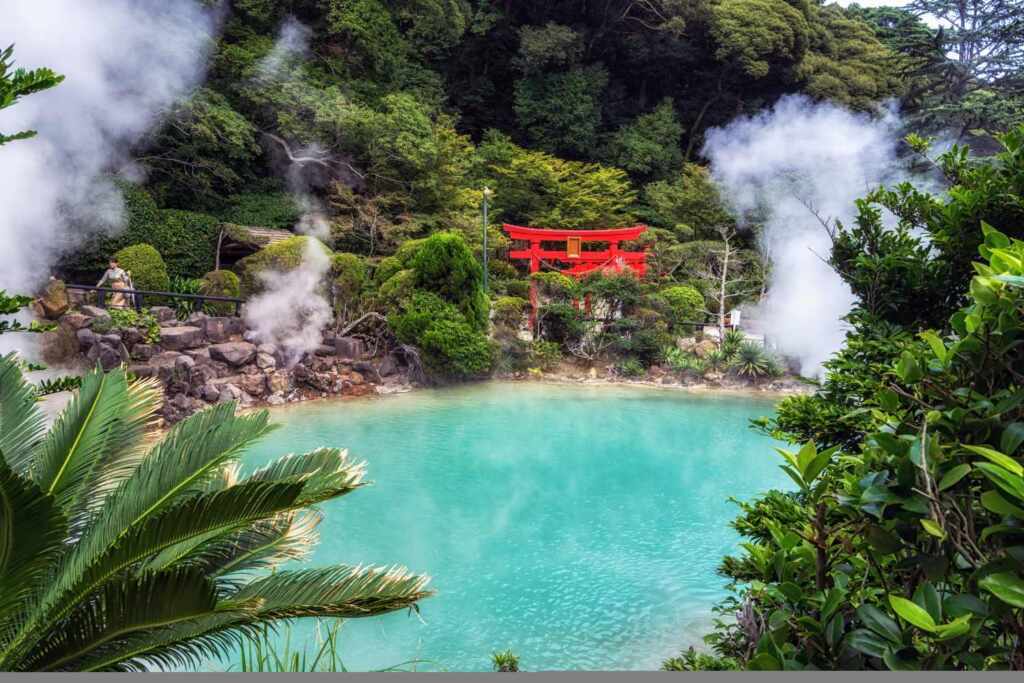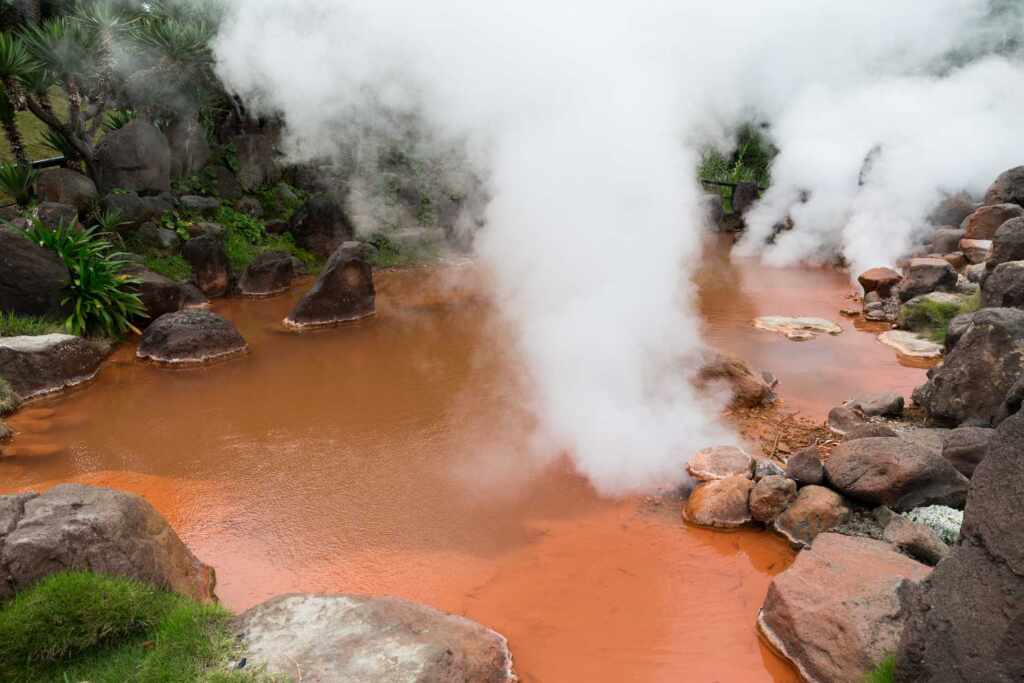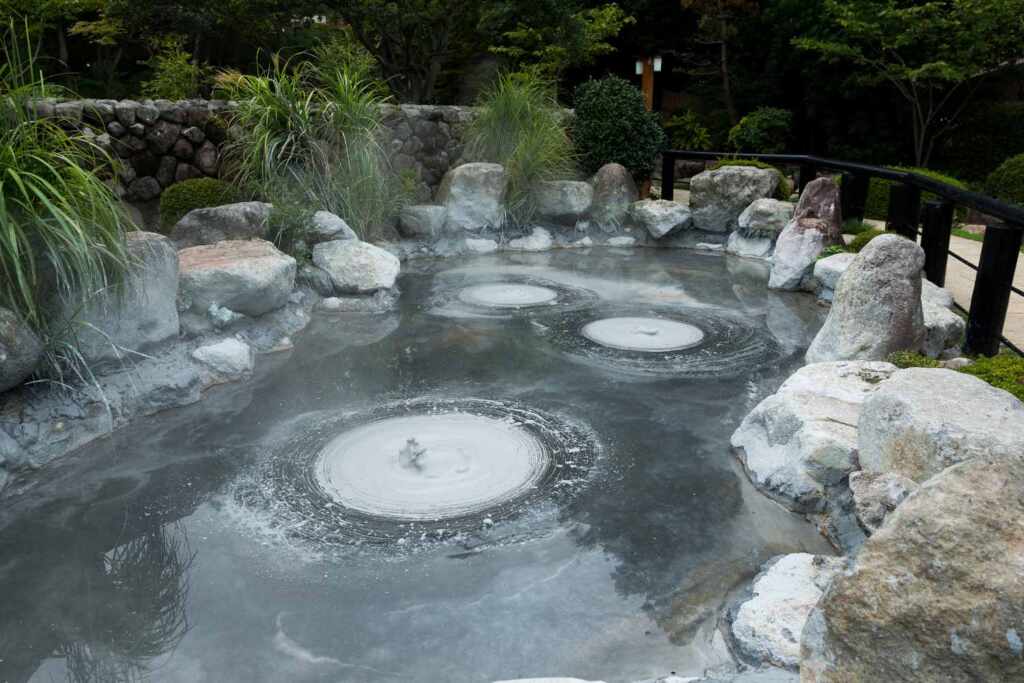Beppu’s “Seven Hells” on Kyushu island turn geothermal terror into wonder, blending history, healing, and spectacle in one of Japan’s most unique hot spring sites.

They look like underground fires breaking through the earth, but what you’ve actually reached is one of Japan’s most extraordinary hot spring paradises. Welcome to the Jigoku, the “Seven Hells” that have made this small town on the island of Kyushu famous.
A name that terrifies, an experience that enchants
The word Jigoku recalls the Buddhist afterlife, a realm of flames and demons where sinners atone for their faults. The first inhabitants of Beppu watched these boiling springs and gas vents with fear. Today, thousands of visitors come precisely for their wild and theatrical nature.
The town lies on Kyushu, the southernmost of Japan’s four main islands, a place with a history stretching back over a millennium. It was here, in the 6th century, that Buddhism first arrived and intertwined with the older Shinto cult of nature.
How to reach this corner of japan
Getting to Beppu is straightforward. Express trains connect it to Hakata, Oita, Miyazaki and Hitoyoshi. From the station, four bus lines (2, 5, 24 and 41) will take you to Kannawa or Umi-Jigoku-mae in about twenty minutes. From there, it’s a matter of walking from one hell to the next. Drivers will find parking lots at every site.
The “hells” are grouped into two areas: five are in the Kannawa district, while two belong to Shibaseki. The distances are walkable, though be prepared for a long, full day.
When to go and how much it costs
The springs open daily from 8 a.m. to 5 p.m. The best seasons to visit are autumn and winter, when the clash between hot water and crisp air creates a striking effect—and when crowds are thinner. Spring, during cherry blossom season, makes even the smaller onsen nearly unbearable from the influx of visitors.
Prices remain accessible: 450 yen (about $2.90 / 3€) for a single hell, 200 yen ($1.30 / 1.30€) for children. The full pass costs 2,200 yen ($14.50 / 14.50€) for adults and 1,000 yen ($6.60 / 6.60€) for kids. It’s an investment worth every cent.
Seven wonders, seven different experiences
Each of the seven sites offers something unique.
Umi Jigoku
The “Sea Hell” misleads with its cobalt-blue color. It looks like an alpine lake, but the water boils at 208°F (98°C). Formed by a volcanic eruption 1,200 years ago, it is framed by manicured gardens and giant water lilies.

Kamado Jigoku
Named after the tradition of cooking rice with steam during the Kamado Hachimangu Shrine festivals, this hell greets visitors with a ceramic demon preparing food using geothermal heat. Here you can try Tamago Onsen, eggs cooked in the steam. The 194°F (90°C) waters also allow for foot baths and steam inhalations.
Tatsumaki Jigoku
Perhaps the most dramatic, this geyser erupts at regular intervals, blasting water and steam that swirl into shapes resembling small tornadoes. At over 221°F (105°C), it is a clockwork spectacle.
Chinoike Jigoku

Known for its blood-red clay pools, this is Japan’s oldest natural hell, already mentioned in ancient texts as Akayusen, the “red hot spring.” The clay is used to make Chinoike Nanko, a salve once thought effective against skin diseases. Its 172°F (78°C) temperature makes it almost cool compared to the others.
Oniishi Bozu Jigoku

Here, gray mud forms bubbles that look eerily like the shaved heads of monks. These spheres swell and pop endlessly, while the 210°F (99°C) mist hangs thick in the air.
Oniyama Jigoku
–In 1923, this site became Japan’s first crocodile farm. Today, around eighty crocodiles thrive thanks to the constant geothermal warmth. Called Wani Jigoku, or “Crocodile Hell,” it captivates visitors who watch these predators bask beside boiling waters.
Shiraike Jigoku
This “White Pond Hell” closes the circuit with elegance. Its transparent water turns a pale blue-white as it pours into the pond, the result of shifting temperature and pressure. Tropical fish, improbably large, swim in pools heated by the springs.
Beyond tourism
Yes, you’ll see souvenir stands and the occasional unsettling statue of a deity. Yet the Seven Hells tell a deeper story—about the Japanese relationship with the forces of nature. What was once feared and avoided is now celebrated and sought after, not just for its curative power but also for its raw beauty.
Vuoi che ti prepari anche una versione più narrativa e lunga, tipo reportage di viaggio, con più divagazioni e atmosfera, invece di questa più “giornalistica e schematica”?
